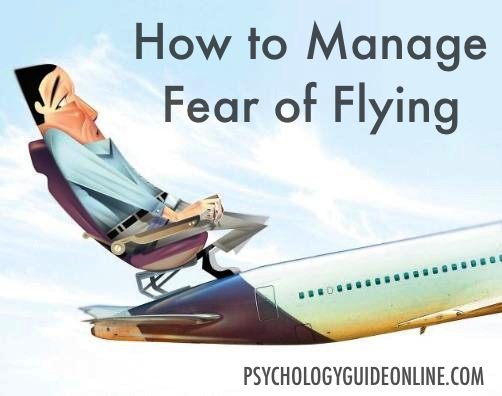
Fear of Flying:
Air travel is crucial in modern society either for business or vacation purposes. Fear of flying impose restrictions on freedom of movement and can limit a person life in several ways (personal and financial growing). All types of transportation have a degree of risk, however air transportation is commonly perceived as more dangerous than other types of transportation, such as traveling by boat, train or car.
Fear of flying is considered by medical associations (American Psychiatric Association) as a well recognized specific phobia. As any phobia, fear of flying is classified as an anxiety disorder. It is usually a result of different fears combined such as fear of crash, claustrophobia (fear of closed spaces), acrophobia (fear of heights), and agoraphobia (fear of crowded spaces). It usually involves loss of control and panic. Each individual could have a specific fear, or many of them combined, which makes this phobia very heterogeneous in its causes.
Causes of Fear of Flying:
Some causes that contributes to the fear of flying are the social perceptions and collective attitudes about air travel (catastrophic events like 9-11) and media coverages that fuel a negative attitude towards air travel. Also previous experiences can trigger resistance to flying.
Prevalence of Fear of Flying:
Researchers estimate that about 10-35% of North American and western population exhibit various degrees of fear towards flying, from mild symptoms to serious panic attacks. According to researchers, most anxiety disorders have a higher prevalence rate for women than for men. In the case of fear of flying, phobia follows the same trend, where women show higher prevalence than men. Nevertheless, it seems that fear of flying worsens depending on the age in women but not in men. However, it seems that women with fear of flying report more acute anxiety symptoms than men.
Treatment of Fear of Flying:
It is strongly recommended that you consult with a psychologist, since any phobia is very difficult (almost impossible) to overcome by itself. Phobias tend to be chronic and tend to be worsened if they’re not managed properly. It’s been shown that psychological treatment is the most effective way to overcome any phobia, rather than any pills.
Several treatments have been developed to help to overcome the fear of flying. Most protocols of these treatments include in vivo or flight simulators, flooding (prolonged exposure to aspects similar to flying), relaxation techniques (breathing and mindfulness techniques), systematic desensitization ( little approaches to flying), pet therapy, traditional psychotherapy or even virtual exposure. Cognitive behavioral techniques are the best option for most people, due to their proved effectiveness and relatively short time.
There is another novel and effective treatment called Eye Movement Desensitization Reprocessing (EMDR). This therapy consists of a therapist who helps the patient to recall traumatic events (thoughts, images, experiences), physiological arousals and emotional distresses that are linked to negative emotions. Once these events are recalled, the therapist redirects the eye movements using stimulants or distractions such as light, objects or music. The theory says that the brain will reprocess the traumatic event without experiencing the negativity.
A typical treatment of Cognitive Behavioral Treatment (CBT) involves psycho-education (accurate information about anxiety, roots of fear of flying and techniques of how to manage anxiety), teaching of relaxation techniques, cognitive and behavioral techniques (to identify distorted thoughts and beliefs, in vivo or through imaginary exposure). They all aimed to ensure the person that he can handle emotions and to change the negative views about flying.
Sources:
van Almen, K. M., & van Gerwen, L. J. (2013). Prevalence and behavioral styles of fear of flying. Aviation Psychology And Applied Human Factors, 3(1), 39-43.
Martinussen, M., Gundersen, E., & Pedersen, R. (2011). Predicting fear of flying and positive emotions towards air travel. Aviation Psychology And Applied Human Factors, 1(2), 70-74.
Triscari, M., Faraci, P., D’Angelo, V., Urso, V., & Catalisano, D. (2011). Two treatments for fear of flying compared: Cognitive behavioral therapy combined with systematic desensitization or eye movement desensitization and reprocessing (EMDR). Aviation Psychology And Applied Human Factors, 1(1), 9-14










